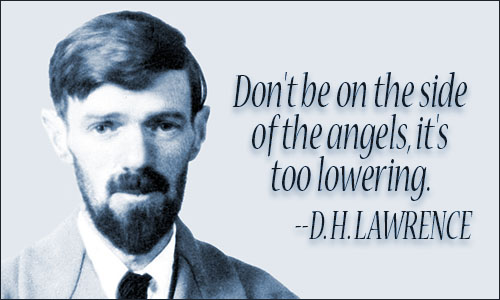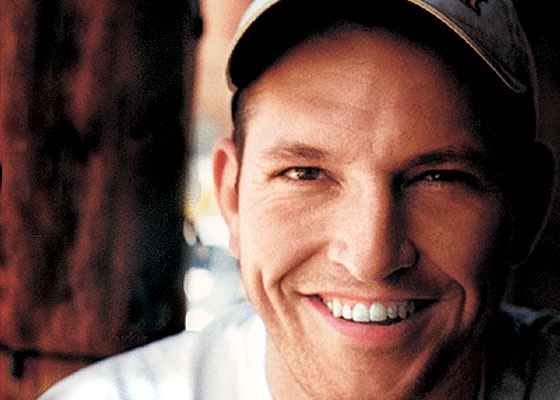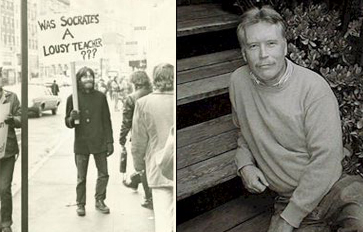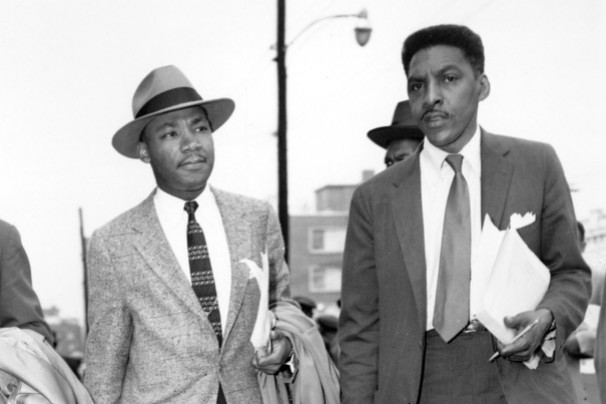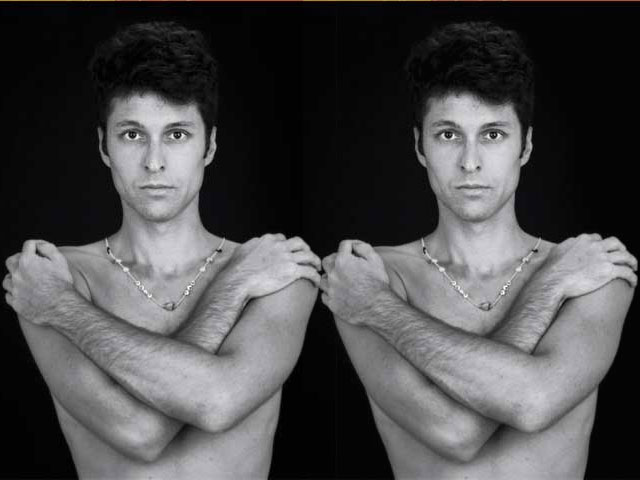|
Gay Wisdom for Daily Living brought to you by White Crane Institute ͏ ͏ ͏ ͏ ͏ ͏ ͏ ͏ ͏ ͏ ͏ ͏ ͏ ͏ ͏ ͏ ͏ ͏ ͏ ͏ ͏ ͏ ͏ ͏ ͏ ͏ ͏ ͏ ͏ ͏ ͏ ͏ ͏ ͏ ͏ ͏ ͏ ͏ ͏ ͏ ͏ ͏ ͏ ͏ ͏ ͏ ͏ ͏ ͏ ͏ ͏ ͏ ͏ ͏ ͏ ͏ ͏ ͏ ͏ ͏ ͏ ͏ ͏ ͏ ͏ ͏ ͏ ͏ ͏ ͏ ͏ ͏ ͏ ͏ ͏ ͏ ͏ ͏ ͏ ͏ ͏ ͏ ͏ ͏ ͏ ͏ ͏ ͏ ͏ ͏ ͏ ͏ ͏ ͏ ͏ ͏ ͏ ͏ ͏ ͏ ͏ ͏ ͏ ͏ ͏ ͏ ͏ ͏ ͏ ͏ ͏ ͏ ͏ ͏ ͏ ͏ ͏ ͏ ͏ ͏ ͏ ͏ ͏ ͏ ͏ ͏ ͏ ͏ ͏ ͏ ͏ ͏ ͏
|
|
||||
| This Day in Gay History | ||||
September 11Born 1885 - D.H. LAWRENCE, English novelist, born (d. 1930) A very important and controversial English writer of the 20th century, whose prolific and diverse output included novels, short stories, poems, plays, essays, travel books, paintings, translations, literary criticism, and personal letters. His collected works represent an extended reflection upon the dehumanizing effects of modernity and industrialization. In them, Lawrence confronts issues relating to emotional health and vitality, spontaneity, sexuality, and instinctive behavior. Lawrence's unsettling opinions earned him many enemies and he endured hardships, official persecution, censorship, and misrepresentation of his creative work throughout the second half of his life, much of which he spent in a voluntary exile he called his "savage pilgrimage." At the time of his death, his public reputation was that of a pornographer who had wasted his considerable talents. E.M. Forster, in an obituary notice, challenged this widely held view, describing him as "the greatest imaginative novelist of our generation." Despite his long marriage to Frieda Weekley, it was during the years in which Women in Love was being written that Lawrence developed a sexual relationship, in the town of Tregerthen, with a Cornish farmer by the name of William Henry Hocking. The affair, brief though it was, seems to indicate that Lawrence's fascination with themes of homosexuality, which he would explore further in Women in Love and Aaron's Rod especially, related to his own, personal sexuality. Indeed, in a letter written during 1913, he writes, "I should like to know why nearly every man that approaches greatness tends to homosexuality, whether he admits it or not…" He is also quoted as saying, "I believe the nearest I've come to perfect love was with a young coal miner when I was about sixteen." Lawrence is perhaps best known for his novels Sons and Lovers, The Rainbow, Women In Love (adapted for film by AIDS activist and playwright Larry Kramer) and Lady Chatterley’s Lover. Within these Lawrence explores the possibilities for life and living within an Industrial setting. In particular Lawrence is concerned with the nature of relationships that can be had within such settings. Though often classed as a realist, Lawrence's use of his characters can be better understood with reference to his philosophy. His use of sexual activity, though shocking at the time, has its roots in this highly personal way of thinking and being. It is worth noting that Lawrence was very interested in human touch behavior [the science of haptics] and that his interest in physical intimacy has its roots in a desire to restore our emphasis on the body, and re-balance it with what he perceived to be western civilization's slow process of over-emphasis on the mind. Died 2001 - MARK BINGHAM, passenger on United Airlines Flight 93, died (b. 1970) Bingham is believed to have been among the passengers who attempted to storm the cockpit to try to prevent the hijackers from using the plane to kill hundreds or thousands of additional victims on September 11, 2001. He made a brief cell phone call to his mother, Alice Hoagland, shortly before the plane went down. Hoagland, a former flight attendant with United Airlines, later left a voice mail message on his cell phone, instructing Bingham to reclaim the aircraft after it became apparent that Flight 93 was to be used in a suicide mission. Bingham was survived by his former boyfriend of six years, Paul Holm, who says this was not the first time Bingham risked his life to protect the lives of others. In fact, he had twice successfully protected Holm from attempted muggings, one of which was at gunpoint. Holm describes Bingham as a brave, competitive man, saying, "He hated to lose — at anything." He was even known to proudly display a scar he received after being gored at the running of the bulls in Pamplona. A large athlete at 6 ft 4 in and 225 pounds, he also played for the San Francisco Fog, a rugby union team. The biennial Gay Rugby tournament is named in his honor (the Bingham Cup). 2001 - FATHER MYCHAL F. JUDGE, Chaplain, FDNY died (b 1933) a Roman Catholic priest of the Franciscan Order of Friars Minor, Chaplain of the Fire Department of New York and first officially recorded victim of the September 11, 2001 attacks. Following his death, a few of his friends and associates revealed that Father Judge was Gay — as a matter of orientation rather than practice, as he was a celibate priest. According to fire commissioner Thomas Von Essen: "I actually knew about his sexuality when I was in the Uniformed Firefighters Association. I kept the secret, but then he told me when I became commissioner five years ago. He and I often laughed about it, because we knew how difficult it would have been for the other firefighters to accept it as easily as I had. I just thought he was a phenomenal, warm, sincere man, and the fact that he was Gay just had nothing to do with anything." Judge was a long-term member of Dignity, a Catholic GLBT activist organization that advocates for change in the Catholic Church's teaching on homosexuality. Since October 1, 1986, when the Vatican’s Congregation for the Doctrine for the Faith issued an encyclical, On the Pastoral Care of Homosexual Persons, which declared homosexuality to be a "strong tendency ordered toward an intrinsic moral evil", many bishops, including Cardinal O’Connor of New York, banned Dignity from Catholic properties. At that time, Judge welcomed Dignity's AIDS ministry to the Church of Saint Francis of Assisi. At Judge's memorial service, Malachy McCourt said that he had heard "if Mike got any money from the right wing, he'd give it to the Gay organizations. I don't know if that's true, but that's his humor, for sure." Ironically, Judge's firefighter helmet was presented to Pope John Paul II in memory of his death. Although there has been call within the Roman Catholic Church to have Mychal Judge canonized, there is no indication that this process is being seriously considered by the Church hierarchy. Several independent Catholic and Orthodox denominations, most notably The Orthodox-Catholic Church of America, have already declared him a saint. A film, The Saint of 9/11 portrays Mychal's life as a spiritual adventure and an honest embrace of life, where alcoholism and sexuality were acknowledged. Inspired by his life, the documentary embraces Mychal's full humanity. 2011 - ARTHUR EVANS, gay theorist, philosopher, activist died on this date (b: 1942). Evans was one of the founders of the Gay Activist Alliance (GAA) that coalesced after Gay people and supporters protested a 1969 police raid on the Stonewall Inn, a Greenwich Village Gay bar. He and others founded the organization when they became frustrated with the tactics of the Gay Liberation Front, which he felt were not assertive enough. Based in New York, the alliance became a model for Gay Rights organizations nationwide, pushing in New York for legislation to ban discrimination against Gay men and Lesbians in employment, housing and other areas. Mr. Evans wrote its statement of purpose and much of its constitution, which began, “We as liberated homosexual activists demand the freedom for expression of our dignity and value as human beings.” To attract attention the alliance staged what its members called “zaps,” confrontations with people or institutions that they believed discriminated against gay people. Among other incidents, they confronted Mayor John V. Lindsay of New York, went to television studios to protest shows perceived as anti-Gay, demanded Gay marriage equality rights at the city’s marriage license bureau, and demonstrated at the taxi commission against a regulation, since abolished, requiring Gay people to get a psychiatrist’s approval before they could be allowed to drive a taxi. In the fall of 1970, Mr. Evans and others showed up at the offices of Harper’s Magazine in Manhattan to protest an article it had published sharply criticizing Gay people and their lifestyle. It was Mr. Evans’s idea to bring a coffee pot, doughnuts, a folding table and chairs for a civilized “tea party.” When the editor, Midge Decter, refused to print a rebuttal as the group demanded, Mr. Evans erupted. “You knew that this article would contribute to the oppression of homosexuals!” he yelled, according to the 1999 book “Out for Good: The Struggle to Build a Gay Rights Movement in America” by Dudley Clendinen, a former reporter for The New York Times, and Adam Nagourney, a current Times reporter. “You are a bigot, and you are to be held responsible for that moral and political act.” While living in Washington, Mr. Evans had spent his winters in Seattle researching the historical origins of the counterculture. After settling in San Francisco, he wrote “Witchcraft and the Gay Counterculture,” a 1978 book tracing homophobic attitudes to the Middle Ages, when people accused of witchcraft, the book contended, were being persecuted in part for their sexuality, often their homosexuality. He was among the first -- if not the first -- people to coin and use the term "Radical Faerie" beginning in a regularly circle that met in San Francisco. He went on to write The God of Ecstasy, a reinterpretation of the Dionysus myth and Critique of Patriarchal Reason (1997), a dense treatise arguing that misogyny and homophobia have influenced supposedly objective fields like logic and physics. Noteworthy 1906 - Mahatma Gandhi coins the term Satyagraha to characterize the Non-Violence movement in South Africa. Satyagraha is a philosophy and practice of nonviolent resistance developed by Mohandas Karamchand Gandhi (also known as "Mahatma" Gandhi). Gandhi deployed satyagraha in campaigns for Indian independence and also during his earlier struggles in South Africa. Satyagraha theory also influenced Martin Luther King, Jr. who was introduced to the idea by Gay African-American activist and teacher, BAYARD RUSTIN, during the campaigns he led during the Civil Rights Movement in the United States. Satya is the Sanskrit word for “truth,” and graha (from the Sanskrit root grah cognate with English word “grab” or “hold on to”) can be rendered as “effort/endeavor.” The term was popularized during the Indian Independence Movement, and is used in many Indian languages including Hindi. Gandhi described it as follows: “Its root meaning is holding on to truth, hence truth-force. I have also called it love-force or soul-force. In the application of satyagraha, I discovered in the earliest stages that pursuit of truth did not admit of violence being inflicted on one’s opponent but that he must be weaned from error by patience and sympathy. For what appears to be truth to the one may appear to be error to the other. And patience means self-suffering. So the doctrine came to mean vindication of truth, not by infliction of suffering on the opponent, but on one’s self.” Today's Gay Wisdom 2017 - It is the anniversary of the terror attack on the World Trade Centers, the Pentagon and on fellow citizens of this country. The Bush administration began planning war even before the tragic events of 9/11/01, but that it was the causus belli for which they were waiting and the day after 9/11 they went to work to weave the web of lies they used to bring us into an unjust and even more tragically, unnecessary war. As the shadows of war slowly began to spread across our country, White Crane offered an issue devoted to the spiritual idea of “Resistance.” Performance artist and author, Tim Miller spoke about the role resistance played in his art. Now we have President…I can’t…I just can’t type his name after that title. It’s just wrong. But the rise of Fascism and Racism and the plutocracy of the Republicans has made resistance new again. If not “new” then as pressing as ever. The war that was started sixteen years ago still rages on, chewing up blood and treasure in its belligerent maw. We live in the Chinese curse of “interesting times.” I don’t hesitate to say it’s scary. So in observation of 9/11, now more than a decade later, and in light of current events, it is a idea and a discussion worth revisiting. Art of Resistance Tim Miller Even more than in my performances, I think I have been able to explore and dismantle the worst of our patriarchal legacy as men through the Gay men's performance workshops I teach. For almost twenty years I have been leading performance workshops for groups of men all over the world. These workshops have been a place for men to resist the patriarchal legacy by physically exploring in full-color real time their most intimate narratives, memories, dreams and possibilities with one another. While I have often done this work with mixed groups of straight, bi-sexual and Gay men, the majority of my efforts have been within the diverse Gay men's communities in the United States, Australia and the United Kingdom. A constant focus, the base note as it were, of all this work, has been a commitment to discovering a more authentic and individualized way of being present within our deeply problematized men's psyches and bodies. I have taught such workshops in contexts as varied as at the Men & Masculinities conference that was sponsored by the National Organization of Men Against Sexism (NOMAS) in Johnstown, Pennsylvania to hundreds of performance workshops for Gay men in cities from Sydney, Australia to Glasgow, Scotland. . In the work I do with groups of Gay men, I have learned that finding a way to be more present in our embodied selves and open to the narratives that we carry in our queer flesh and blood is the quickest route to discovering the revelatory material about what it just might mean to be human. Claiming this kind of psychic space to explore our most queeny, spiritual or erotic selves as Gay men is to me a profound act of resistance. In 1994 frayed from the culture war and onslaught of AIDS, I made a show called Naked Breath in which I wanted to write a sexy and highly personal story about how two men, one HIV-positive and one negative, managed to connect. After several years in the late 80's and early 90's of shouting in front of government buildings or being dragged by cops down the asphalt on the streets of Los Angeles or Houston or San Francisco or New York with ACT-UP, I felt called to really honor the quiet human-size victories that are available to us. To model the resistance to fear of each other’s bodies across sero-status, but also to perform the resistance to the virus' negative effects to our psychic and emotional health as we did this. I wanted to try to locate what has happened to us during the AIDS era and hold up the hopeful fact that men were still able to get close to one another there amid the swirl of blood within and the cum smeared on our bodies. In Naked Breath I am surrounded by both these bodily fluids; I wanted to get wet in this performance. I also wanted that we could do this safely and full of respect for each other's bodies. My new show Us is full of nascent little queer boy resistance, but my show GLORY BOX has my favorite example. I tell a funny story in GLORY BOX about asking a boy to marry me when I was nine years old. He beats me up and tells me to "take it back". I do "take it back—that I wanted to marry him—but I cross my fingers behind me before I do! Maybe that was the beginning of my resistance and activism! That gave me the basic dissatisfaction with stuff that just isn't fair. I do think though, that Gay Americans are ready to submit to a basic disrespect to their humanity that Gay people in other western countries would find unacceptable. We have accommodated to sodomy laws, Gays not allowed in the military etc. We have that damn radical religious right in the U.S. that other countries just don't have. It infects everything. If queer folks in America would actually be prepared to resist we could change so much that messes with our community. That old devil of internalized homophobia gets in our way. I keep trying to stay close to that little nine-year old who knew that it just wasn't fair that he couldn't marry another boy! This is very much connected to the story I tell in Us about relating to Oliver Twist in the film musical as a little queer activist. He, too, wanted some "more!” That crucial act: wanting to marry another boy, of claiming space and agency as a little nine-year-old Gay boy, that resistance to the heterosexual narrative, is the place from where all my other activism around lesbian and Gay civil marriage and immigration rights leaps. Tim Miller is the author of SHIRTS AND SKINS and BODY BLOWS. In 1990 he was awarded an NEA Solo Performance Fellowship which was overturned under political pressure from the Bush I White House. As part of the NEA 4 Miller successfully sued the federal government for violation of First Amendment rights and won. Though this decision was later partially overturned by the Supreme Court, Miller continues his fight for freedom of expression and Gay rights. | ||||
|
|8|O|8|O|8|O|8|O|8|O|8|O|8|O|8| Gay Wisdom for Daily Living from White Crane Institute "With the increasing commodification of gay news, views, and culture by powerful corporate interests, having a strong independent voice in our community is all the more important. White Crane is one of the last brave standouts in this bland new world... a triumph over the looming mediocrity of the mainstream Gay world." - Mark Thompson Exploring Gay Wisdom & Culture since 1989! |8|O|8|O|8|O|8|O|8|O|8|O|8|O|8| | ||||
|
|||||
|

